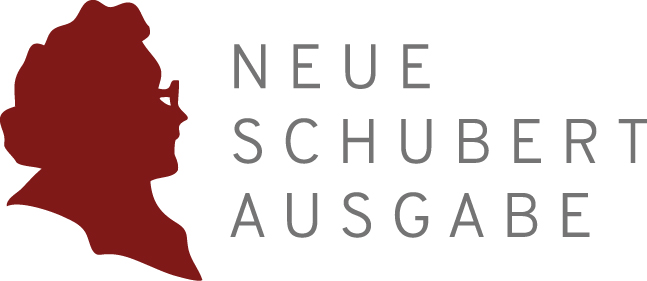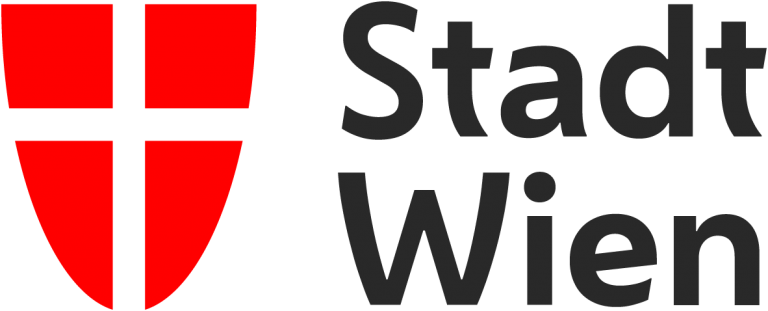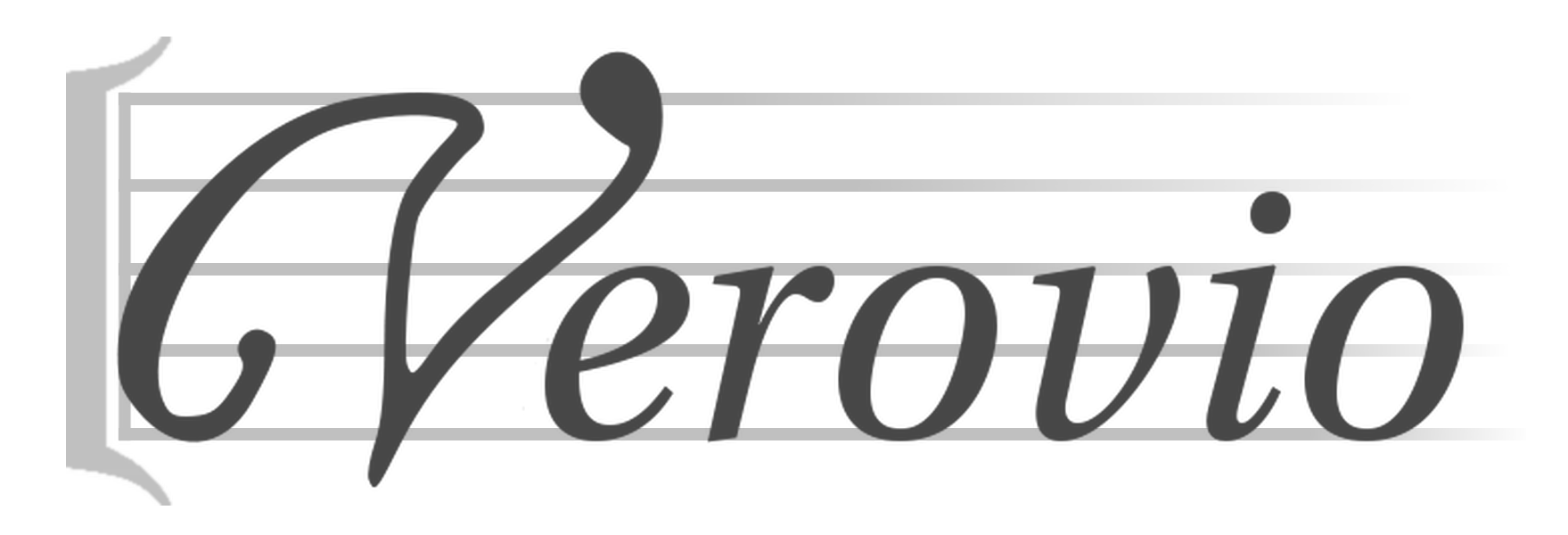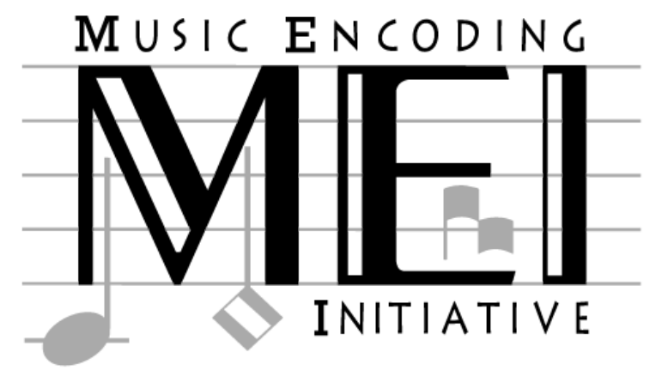Editionsrichtlinien der Forschungsplattform Schubert-digital
Zum Aufbau der Datenbank siehe die Unterseite Projektbeschreibung (Aufbau der Quellen-Datenbank).
Glossar
- Gesamtmanuskript: ursprünglicher Zustand einer Quelle, vor einer etwaigen Teilung
- Bestandteil: heutiger Zustand einer Quelle; alles, was sich unter einer Signatur in einer Bibliothek befindet
- Notat: zeitlich zusammenhängende Schreibschicht
- Eintrag: schriftliche Ergänzungen zum ursprünglichen musikalischen Notat
- Manipulation der Quelle: physische Veränderung der Quelle durch Herausnehmen oder Hinzufügen von Blättern oder Teilen eines Blattes
Formalia
Beschrieben wird alles, was nicht Notentext ist. „Da Capo“-Angaben, Stimmbezeichnungen und Partituranordnungen gehören zum Notentext und werden daher nicht gesondert beschrieben, außer es handelt sich um einen ungewöhnlichen Fall. Die Angabe „Fine“ hingegen wird beschrieben.
Werktitel werden gemäß Deutsch-Verzeichnis² (1978) angegeben und sind mit dem entsprechenden Eintrag ins Werkregister verlinkt.
Sofern Datierungen auf den Tag genau bekannt sind, werden diese auch mit Tag angegeben. Sollte aber nur ein Monat oder nur ein Jahr bekannt sein, wird auf Nennung der kleineren Zeiteinheit verzichtet. Wenn also nur „Mai 1815“ angegeben ist, ist unbekannt, wie viele Tage und wann genau Schubert im Mai an einem Werk arbeitete. Die Datierung „1. Mai 1815 bis 31. Mai 1815“ bedeutet hingegen, dass Schubert an einem Werk tatsächlich vom 1. bis zum 31. Mai arbeitete.
Die Blattzählung beginnt mit jedem Bestandteil mit „1r“. Bei Gesamtmanuskripten mit mehreren Bestandteilen wird der Buchstabe der Blattnummer vorangestellt, z. B.: „Bl. a/1r“, „Bl. b/3v“. In welcher Reihenfolge sie im ursprünglichen Zustand vorlagen, wird auf Ebene des Gesamtmanuskripts beschrieben.
Unbekannte Schreiberhände erhalten die Nummer des Gesamtmanuskripts, in dem sie erstmals auftauchen, sowie einen zusätzlichen Buchstaben entsprechend ihrer Reihenfolge innerhalb des Gesamtmanuskripts, z. B. „unbekannt-0005-a“. Dadurch ist es möglich, dieselbe unbekannte Schreiberhand quellenübergreifend zuzuordnen, auch wenn die Hand selbst nicht identifiziert werden kann. Wenn nur bekannt ist, dass es sich bei der Hand um einen/eine Mitarbeiter:in einer bestimmten Institution handelt (z. B. Musikverlag), wird die Institution verlinkt.
Abkürzungen werden durch Ergänzungen in eckigen Klammern aufgeschlüsselt, z. B. „Sig[no]re“.
Nach obenQuellensystematik der Notate
- a) Autograph
- b) Teilautograph
- c) Abschrift
- d) Notat von Werk eines anderen Komponisten
- i) Abschrift/Notat eines Fremdwerkes durch fremde Hand (z. B. Ferdinand Schubert benutzte eine leere Seite in einem Manuskript von Schubert)
- ii) Autographe Abschrift/Notat eines Fremdwerkes durch Schubert
Authentizität:
- a) Skizze/Entwurf
- b) Kompositionsmanuskript (Stadium zwischen Entwurf und Reinschrift)
- c) Autographe Kopie
- d) Reinschrift
- e) Stichvorlage
Stadium der Ausarbeitung:
- a) Partitur (dazu zählt auch Klavier 2-hdg.)
- b) Particell
- c) Stimme(n)
- d) einstimmiges Notat
- e) mehrstimmiges Notat
Notationsform:
- a) Instrumentalstimmen
- b) Vokalstimmen
- c) Instrumental- und Vokalstimmen
- d) Klavierauszug
- e) Klavierpartitur
- f) Klavierpartitur 4-hdg: zusätzlich dazu primo und secondo
- g) Albumblatt
Notationsform spezifiziert:
- a) vollständig
- b) unvollständig (die Komposition ist abgeschlossen, hier liegt aber nur ein Teil vor)
- c) Kompositionsfragment (die Komposition ist nicht abgeschlossen)
Vollständigkeit:
Kategorisierung der Eintragungen
- Noten
- Titel: sämtliche Arten der Titelangabe wie Titelblatt, Kopftitel und Überschrift
- Datierung (und/oder Signatur): Signaturen werden hier nur von Franz Schubert angeführt, Signaturen von anderen Personen werden als Besitzvermerk klassifiziert
- Entwurf(sschicht): sämtliche Entwurfsstadien, von einzeiligen Entwürfen bis hin zu Partitur-Entwürfen
- Gesangstext
- Korrektur: Änderungen des Notentexts, die direkt beim Schreiben (mit demselben Schreibmittel) vorgenommen wurden
- Revision: nachträgliche Prüfung des Notentexts, in der Regel mit einem anderen Schreibmittel
- Lagenzählung
- Manuskriptnummerierung
- Blatt-/Seitenzählung
- Werknummerierung
- Umnummerierung: Korrektur oder Revision der Werknummerierung
- Stechereintragungen: sämtliche Eintragungen, die im Verlauf der Drucklegung ergänzt wurden
- Besitzvermerke: Signaturen, die nicht von Schubert stammen (z. B. Ferdinand Sch., C.A. Spina), werden als Besitzvermerke geführt.
- Zertifikat/Vidimation: Echtheitsbestätigungen, Zensurvermerke
- Sonstiges
Abkürzungsverzeichnis
| Abkürzung | Vollform |
|---|---|
| Bl., Bll. | Blatt, Blätter |
| ebd. | ebenda |
| korr. | korrigiert |
| Ms., Mss. | Manuskript, Manuskripte |
| NA | Neue Schubert-Ausgabe (den jeweils vorliegenden Band, vollständig zitieren!) |
| s. | siehe |
| S. | Seite |
| Slg. | Sammlung |
| T. | Takt, Takte |
| u. a. | unter anderem |
| urspr. | ursprünglich |
| vgl. | vergleiche |
| WZ | Wasserzeichen |
Editorial guidelines of the research platform Schubert digital
For the structure of the database, see the subpage project description (structure of the source database).
Glossary
- Gesamtmanuskript (complete manuscript): original state of a source, before any division
- Bestandteil (component): current state of a source; everything that is subsumed by a shelfmark in a library
- Notat: temporally coherent writing layer
- Eintrag (entry): written additions to the original musical notation
- Manipulation der Quelle (source manipulation): physical alteration of the source by removing or adding sheets of paper or parts of a sheet
Formalities
Everything that is considered non-musical text is described. "Da Capo" indications, staff descriptions and score arrangements are part of the musical text and are therefore not described separately, apart from unusual cases. The "Fine" indication, however, is described.
Work titles are given according to the Deutsch-Verzeichnis² (1978) and are linked to the corresponding entry in the index of works.
A complete date indicates that the exact date is known to the day. However, if only a month or only a year is known, the smaller time unit is omitted. So if only ‘May 1815’ is given, it is unknown exactly when and for how many days Schubert worked on a composition in May. The date ‘1 May 1815 to 31 May 1815’, on the other hand, means that Schubert actually worked on a composition from 1 to 31 May.
The numbering of leaves begins with „1r“ for each component. For complete manuscripts with several components, the letter is placed in front of the page number, e.g.: „Bl. a/1r“, „Bl. b/3v“. The original order of the components is described at the level of the complete manuscript.
Unknown scribal hands are given the number of the complete manuscript in which they first appear, as well as an additional letter according to their order within the complete manuscript, e.g. „unknown-0005-a“. This makes it possible to assign the same unknown scribal hand across sources, even if the hand itself cannot be identified. If it is known that the hand is an employee of a specific institution (e.g. music publisher), the institution is linked.
Abbreviations are supplied with additions in square brackets, e.g. „Sig[no]re“.
TopSource classification of writing layer
- a) Autograph
- b) Partial autograph
- c) Copy/Apograph
- d) Writing layer of a work by another composer
- i) Copy or writing layer of a foreign work by a foreign hand (e.g. Ferdinand Schubert used a blank page in a manuscript of Franz Schubert)
- ii) Autograph copy or writing layer of a foreign work by Schubert
Authenticity:
- a) Sketch/Draft
- b) Compositional manuscript (stage between draft and a clean copy)
- c) Autograph copy
- d) Clean copy
- e) Template for music engraving
Stage of elaboration:
- a) Full score (including piano two hands)
- b) Particell
- c) Part(s)
- d) Monophonic writing layer
- e) Polyphonic writing layer
Form of notation:
- a) Instrumental parts
- b) Vocal parts
- c) Instrumental and vocal parts
- d) Piano reduction
- e) Piano score
- f) Piano score four hands: with additionnal primo and secondo
- g) Album leaf
Specified forms of notation:
- a) complete
- b) incomplete (the composition is completed, but only a part is extant)
- c) compositional fragment (the composition is incomplete)
Completeness:
Categorisation of entries
- Notes
- Title: all types of title like draft title, head title, and heading
- Dating (and/or signature): signatures are listed here only for Franz Schubert; signatures by other persons are classified as ownership notes
- Draft or draft layer: all draft stages from sketches in a single staff to draft scores
- Vocal lyrics
- Correction: changes to the notated music that were made directly during writing (with the same writing medium)
- Revision: subsequent review of the notated music, usually with a different writing medium
- Section count
- Manuscript numbering
- Folio or page numbering
- Opus number
- Renumbering: corrections or revision of the work numbering
- Engraver’s entries: all entries that were added during the course of printing
- Notes of ownership
- Certificate/Verification: certificates of authenticity, censorship notes
- Miscellaneous
List of abbreviations
| Abbreviation | Complete form |
|---|---|
| Bl., Bll. | Blatt, Blätter |
| ebd. | ebenda |
| korr. | korrigiert |
| Ms., Mss. | Manuskript, Manuskripte |
| NA | Neue Schubert-Ausgabe (den jeweils vorliegenden Band, vollständig zitieren!) |
| s. | siehe |
| S. | Seite |
| Slg. | Sammlung |
| T. | Takt, Takte |
| u. a. | unter anderem |
| urspr. | ursprünglich |
| vgl. | vergleiche |
| WZ | Wasserzeichen |
Kontakt
Österreichische Akademie der Wissenschaften
Austrian Centre for Digital Humanities and Cultural Heritage
Abteilung Musikwissenschaft
Wiener Arbeitsstelle der Neuen Schubert-Ausgabe
Bäckerstraße 13
1010 Wien
T: +43 1 51581-2200
E: schubert-digital@oeaw.ac.at
Projektpartner & Fördergeber
Schubert-digital befindet sich derzeit im Aufbau. Für Informationen zum neuesten Stand der Datenbanken, siehe Aktuelles.





